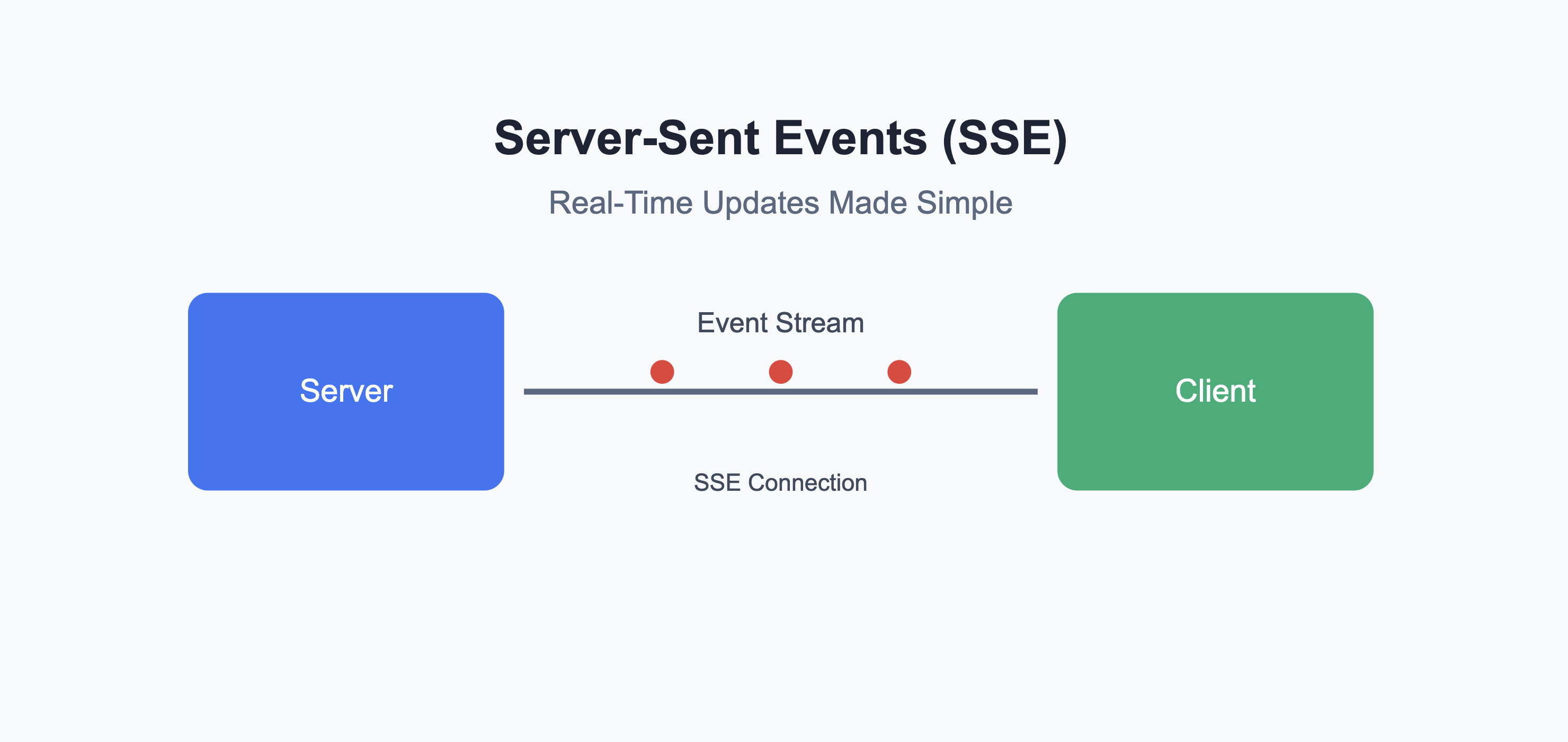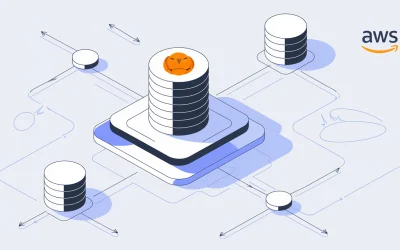Server-Sent Events (SSE) have revolutionized how we handle real-time web communications, powering popular applications like ChatGPT’s streaming responses. In this tutorial, we’ll explore what SSE is, how it works, and build a simple demonstration to see it in action.
What Are Server-Sent Events?
Server-Sent Events is a web standard that enables servers to push real-time updates to clients over a single HTTP connection. Unlike WebSocket, which provides full-duplex communication, SSE is specifically designed for scenarios where the server needs to send data to the client in a one-way stream.
Key Features of SSE:
- Automatic reconnection if the connection is lost
- Event IDs and custom event types
- Built-in support in modern browsers
- Simple implementation compared to WebSocket
- Works over regular HTTP/HTTPS
How SSE Works
When a client wants to receive server updates, it creates an EventSource connection to a specific endpoint. The server keeps this connection open and sends formatted text messages whenever there’s new data to share. The messages are formatted as text/event-stream and can include various fields like data, event, and id.
Practical Implementation
Let’s create a simple example where a server sends random numbers to a client every second.
Jump right in with a live demo, or scroll down to explore the concepts behind SSE
Initial Setup
- First, create a new directory and initialize a Node.js project:
mkdir sse-demo
cd sse-demo
npm init -y
- Install the required dependencies:
npm install express
Project Structure
Create the following files in your project directory:
sse-demo/
├── package.json
├── server.js
└── public/
└── index.html
Server Code (server.js)
const express = require('express');
const app = express();
// Serve static files from 'public' directory
app.use(express.static('public'));
// SSE endpoint
app.get('/sse', (req, res) => {
// Set headers for SSE
res.writeHead(200, {
'Content-Type': 'text/event-stream',
'Cache-Control': 'no-cache',
'Connection': 'keep-alive'
});
// Send a new random number every secondconst intervalId = setInterval(() => {
const data = {
timestamp: Date.now(),
value: Math.random()
};
res.write(`data: ${JSON.stringify(data)}\n\n`);
}, 1000);
// Clean up on client disconnect
req.on('close', () => {
clearInterval(intervalId);
});
});
constPORT = 3000;
app.listen(PORT, () => {
console.log(`Server running at http://localhost:${PORT}`);
});
Client Code (public/index.html)
html<!DOCTYPE html>
<html>
<head>
<title>SSE Demo</title>
</head>
<body>
<h1>Real-Time Updates with SSE</h1>
<div id="updates"></div>
<script>
const updatesDiv = document.getElementById('updates');
const evtSource = new EventSource('/sse');
evtSource.onmessage = function(event) {
const data = JSON.parse(event.data);
const newElement = document.createElement('div');
newElement.textContent = `Received at ${new Date(data.timestamp).toLocaleTimeString()}: ${data.value}`;
updatesDiv.prepend(newElement);
};
evtSource.onerror = function(err) {
console.error('SSE error:', err);
evtSource.close();
};
</script>
</body>
</html>Running the Application
- Start the server:
node server.js
- Open your browser and navigate to:
http://localhost:3000
Testing
- You should see new random numbers appearing every second
- Try refreshing the page – the connection will automatically reconnect
- Open multiple browser tabs – each will receive its own stream of updates
Troubleshooting
- Make sure no other application is using port 3000
- Check the browser console for any JavaScript errors
- Verify that all files are in the correct directories
- Ensure all dependencies are installed correctly
Best Practices
- Error Handling: Always implement proper error handling on both client and server sides.
- Connection Management: Clean up server resources when clients disconnect.
- Message Format: Use JSON for structured data transmission.
- Reconnection Strategy: Configure appropriate reconnection intervals based on your use case.
Common Use Cases
- Live news feeds
- Real-time analytics dashboards
- Social media feeds
- Chat applications
- Progress updates for long-running operations
Browser Support
SSE is supported in all modern browsers including:
- Chrome
- Firefox
- Safari
- Edge
- Opera
Internet Explorer doesn’t support SSE natively, but polyfills are available if needed.
Conclusion
Server-Sent Events provide a simple yet powerful way to implement real-time updates in web applications. Their simplicity, built-in features, and broad browser support make them an excellent choice for many real-time scenarios. While WebSocket might be more appropriate for bidirectional communication, SSE excels in situations where server-to-client updates are the primary requirement.
By following this tutorial and understanding the core concepts, you’re now equipped to implement SSE in your own projects and create more dynamic, real-time web applications.




